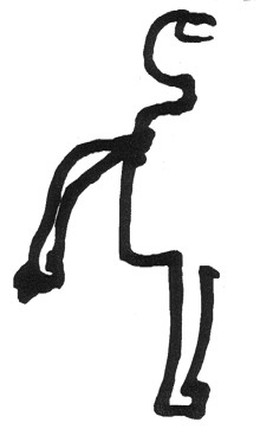Art for Communication

I volunteered at the York-Durham Aphasia Centre now the A.C.D Programme of March of Dimes Canada for almost 30 years. Aphasia is a communication disorder that occurs after a stroke, brain injury or brain illness. It affects a person's ability to speak but not their intelligence. Imagine all of a sudden not being able to ask for a glass of water or to say I love you. This is what people with Aphasia face every day.
Aphasia is equated with being dropped into a country and not being able to speak the language. How would you get your message across? Well you would gesture, draw pictures, use any other means to communicate. At the Centre we encouraged clients to develop all their communication skills. Drawing is one of those alternates. It is a visual language that most adults do not use that often. If you have word finding difficulties sometimes even beginning to draw something will help the word come out. If you have limited speech, drawing can be your best way to communicate.
There were many different reasons that art was part of the Aphasia Centre. It was not a crafts programme, lessons, or therapy. Craft projects do not tap into brain exercises, we were not giving art lessons. We were not equipped to analyze and interpret art, a powerful tool used to make connections to deep thoughts and feelings. For people who have a challenge communicating this could be very problematic! We were a communication program and the goal was giving our clients all the tools to communicate.
Some of the reasons to use art:
This was a fun activity, in a safe environment stressing the process not product. Success was always measured by the comfort of the clients to try every aspect of the art program. These were very brave individuals. It is very intimidating for even very successful artists to have someone watch him or her paint.
The program I developed was designed to develop confidence drawing. It is carefully thought out, with proven scientific studies, designed to stimulate the brain. We followed a series of brain exercises including drawing upside down to tap into the right brain. The results are truly amazing!
More details please contact Diana
(This page is written in an Aphasia friendly format, key words in bold to help the brain process)
Aphasia is equated with being dropped into a country and not being able to speak the language. How would you get your message across? Well you would gesture, draw pictures, use any other means to communicate. At the Centre we encouraged clients to develop all their communication skills. Drawing is one of those alternates. It is a visual language that most adults do not use that often. If you have word finding difficulties sometimes even beginning to draw something will help the word come out. If you have limited speech, drawing can be your best way to communicate.
There were many different reasons that art was part of the Aphasia Centre. It was not a crafts programme, lessons, or therapy. Craft projects do not tap into brain exercises, we were not giving art lessons. We were not equipped to analyze and interpret art, a powerful tool used to make connections to deep thoughts and feelings. For people who have a challenge communicating this could be very problematic! We were a communication program and the goal was giving our clients all the tools to communicate.
Some of the reasons to use art:
- It is about choice; as simple as what colour of paint to use, and where to put the paint on the paper.
- Brain "warm up" exercises first, then a challenging drawing to stretch the brain to new levels.
- Watercolours were primarily used for the "cool down" because they were affordable and spectacular results could be achieved by allowing the paint to work resulting in a successful feeling for clients.
- Non-verbal communication
- Helps fine motor skills and sequencing of events (dipping the brush in water, in paint, then to the paper).
- Exercising the right side of the brain, perhaps creating new pathways. Art stimulates the non-dominant right side. (Drawing on the Right Side of the Brain, Betty Edwards 1979)
- Music was played to distract that left brain and let the right brain take over.
- "Doodling" was encouraged because it is a visual language and another way to communicate. (The Doodle Revolution, Sunni Brown 2014)
- Communication and interaction between clients before, during, and after painting.
This was a fun activity, in a safe environment stressing the process not product. Success was always measured by the comfort of the clients to try every aspect of the art program. These were very brave individuals. It is very intimidating for even very successful artists to have someone watch him or her paint.
The program I developed was designed to develop confidence drawing. It is carefully thought out, with proven scientific studies, designed to stimulate the brain. We followed a series of brain exercises including drawing upside down to tap into the right brain. The results are truly amazing!
More details please contact Diana
(This page is written in an Aphasia friendly format, key words in bold to help the brain process)
